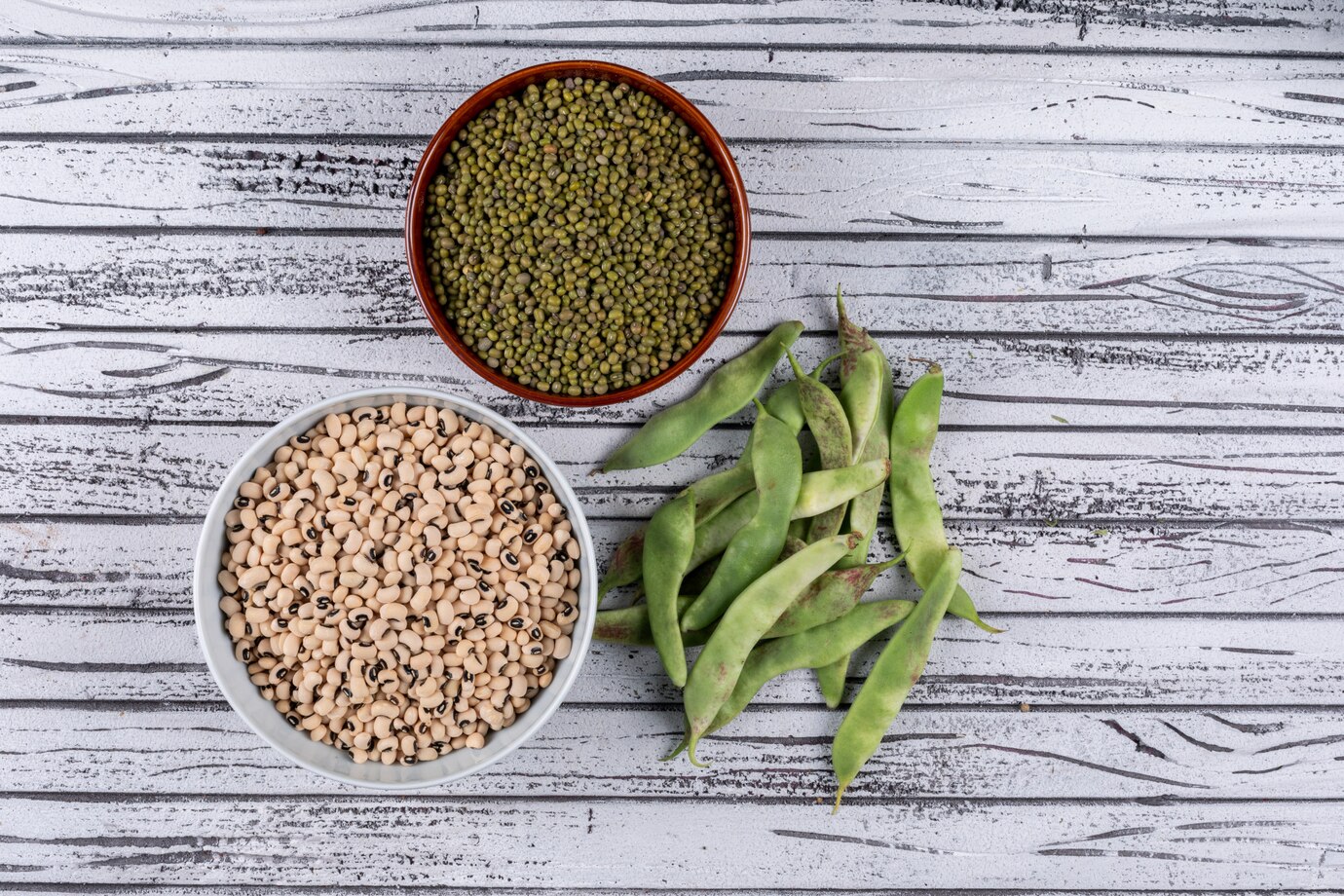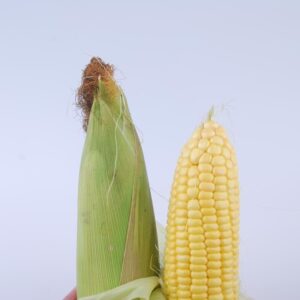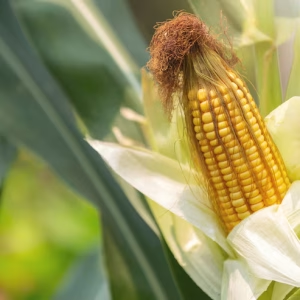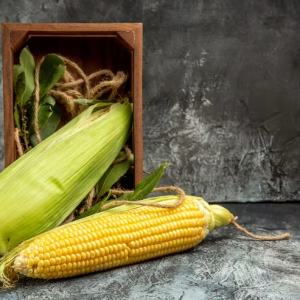Introduction to Green Bajra and Red Bajra
Bajra, or pearl millet (Pennisetum glaucum), is a nutrient-rich, gluten-free grain celebrated for its resilience and health benefits. Among its varieties, green bajra and red bajra stand out, each offering unique characteristics and nutritional profiles. At CMS Industries, a leading supplier of high-quality grains and agricultural products manufacturers, we champion bajra’s diversity to support healthy, sustainable diets.
With the global superfood market projected to reach $250 billion by 2028, understanding the differences between green and red bajra is key for health-conscious consumers and food producers.
This blog compares Green Bajra vs. Red Bajra, exploring their nutritional content, health benefits, culinary uses, and suitability for various diets. Discover why CMS Industries’ premium bajra varieties are your go-to choice for wholesome, eco-friendly nutrition.
What Are Green Bajra and Red Bajra?
- Green Bajra: Refers to pearl millet with a greenish hue in its grains, often harvested at an earlier stage or from specific cultivars. It has a mild flavor and is rich in antioxidants and fiber.
- Red Bajra: Characterized by its reddish-brown grains, red bajra comes from varieties with higher anthocyanin content, offering a slightly nuttier taste and robust nutritional benefits.
We source both green and red bajra from trusted Indian farmers, ensuring purity and quality through rigorous testing. Our commitment to sustainable agriculture makes our bajra varieties ideal for health-focused diets and food manufacturing.
Why Compare Green Bajra and Red Bajra?
Green and red bajra differ in appearance, nutrient composition, flavor, and applications, influencing their suitability for specific health needs and culinary preferences. Factors like antioxidant content, glycemic index, and mineral profiles determine their impact on wellness. By comparing them, consumers and businesses can choose the variety best aligned with their goals, from diabetes management to sustainable eating. CMS Industries’ high-quality bajra ensures you harness the full potential of both varieties.
Let’s dive into a detailed comparison of Green Bajra vs. Red Bajra to uncover their unique strengths.
Nutritional Comparison: Green Bajra vs. Red Bajra
To understand their health benefits, let’s compare the nutritional profiles of green and red bajra (per 100g of whole grains, approximate values):
| Nutrient | Green Bajra | Red Bajra |
| Calories | 360 kcal | 365 kcal |
| Protein | 10-11g | 11-12g |
| Fiber | 9-10g | 8-9g |
| Carbohydrates | 65-70g | 68-72g |
| Fat | 4-5g | 4-5g |
| Magnesium | 120-140mg | 130-150mg |
| Iron | 6-8mg | 7-9mg |
| Calcium | 40-50mg | 45-55mg |
| Antioxidants | High (phenolics) | Higher (anthocyanins) |
| Glycemic Index (GI) | 55 (Low) | 50-55 (Low) |
Key Takeaways:
- Green Bajra: Slightly higher fiber, rich in phenolic antioxidants, and milder flavor.
- Red Bajra: Higher protein, iron, and anthocyanin antioxidants, with a nuttier taste.
CMS Industries manufacturers green bajra and red bajra are minimally processed to preserve these nutrients, ensuring maximum health benefits in every grain.
Health Benefits Comparison
Green Bajra Benefits
- High Fiber for Digestion: Promotes regular bowel movements, prevents constipation, and supports gut health with 9-10g of fiber per 100g.
- Antioxidant-Rich: Phenolic compounds combat oxidative stress, reducing inflammation and supporting heart health.
- Low Glycemic Index: GI of 55 ensures slow sugar release, ideal for diabetes management.
- Iron for Energy: High iron content (6-8mg/100g) combats anemia and boosts energy levels.
- Gluten-Free: Safe for celiac disease and gluten intolerance, perfect for sensitive diets.
Red Bajra Benefits
- Potent Antioxidants: Anthocyanins provide anti-inflammatory and anti-cancer properties, enhancing immunity and skin health.
- Higher Protein: 11-12g/100g supports muscle repair and growth, ideal for active individuals.
- Rich in Iron and Magnesium: Higher iron (7-9mg) and magnesium (130-150mg) support blood health and nerve function.
- Low GI for Diabetes: GI of 50-55 stabilizes blood sugar, suitable for diabetic diets.
- Bone Health Support: Elevated calcium and magnesium strengthen bones, reducing osteoporosis risk.
Our Premium Red Bajra Grains are crafted to maximize these benefits, offering a nutrient-dense choice for your diet. As a trusted Red Bajra Manufacturer, we ensure quality, purity, and freshness in every batch—ideal for health-conscious consumers seeking wholesome and natural grain options.
Green Bajra vs. Red Bajra: Which Is Healthier?
The “healthier” choice depends on specific health goals and dietary needs. Let’s compare them across key factors:
-
Digestive Health
- Green Bajra: Higher fiber (9-10g/100g) promotes gut health and prevents digestive issues.
- Red Bajra: Slightly lower fiber (8-9g/100g) but still supports digestion effectively.
- Winner: Green bajra, for its superior fiber content.
-
Antioxidant Benefits
- Green Bajra: Rich in phenolic antioxidants, reducing inflammation and heart disease risk.
- Red Bajra: Higher anthocyanin content offers stronger anti-inflammatory and anti-cancer properties.
- Winner: Red bajra, for its potent antioxidant profile.
-
Blood Sugar Control
- Green Bajra: Low GI (55) ensures steady blood sugar levels, ideal for diabetes.
- Red Bajra: Slightly lower GI (50-55) provides even better blood sugar stability.
- Winner: Red bajra, for its edge in glycemic control.
-
Nutrient Density
- Green Bajra: High iron and fiber, beneficial for anemia and digestion.
- Red Bajra: Higher protein, iron, and magnesium, supporting muscle and bone health.
- Winner: Red bajra, for its broader nutrient profile.
-
Culinary Versatility
- Green Bajra: Mild flavor suits rotis, porridges, and salads, blending well with other ingredients.
- Red Bajra: Nuttier taste enhances bold dishes like khichdi, snacks, and baked goods.
- Winner: Tie, as both offer unique flavors for diverse recipes.
-
Sustainability
- Green Bajra: Drought-resistant, requiring minimal water, aligning with eco-friendly farming.
- Red Bajra: Equally sustainable, thriving in harsh conditions with low resource needs.
- Winner: Tie, as both are environmentally friendly.
Overall Verdict: Red bajra edges out slightly for its higher antioxidant, protein, and mineral content, making it ideal for immunity, muscle health, and diabetes management. Green bajra excels for digestive health and milder flavor. CMS Industries’ green and red bajra ensure you can choose the best variety without compromising quality.
Culinary Uses of Green Bajra and Red Bajra
Both bajra varieties are versatile in the kitchen. Here’s how to use them:
Green Bajra
- Rotis: Mix green bajra flour with warm water for soft, gluten-free flatbreads.
- Porridge: Cook grains with milk or water for a light, nutritious breakfast.
- Salads: Add cooked green bajra to salads for a fiber-rich crunch.
- Soups: Use as a thickener for hearty, wholesome soups.
Red Bajra
- Khichdi: Combine red bajra with lentils and spices for a nutty, protein-packed meal.
- Snacks: Make crackers or fritters with red bajra flour for bold flavor.
- Baked Goods: Incorporate into muffins or cookies for a nutrient-dense treat.
- Pilafs: Cook red bajra grains with vegetables for a savory side dish.
Pro Tip: CMS Industries’ Green Bajra Flour and Red Bajra Flour are finely milled for easy preparation, retaining nutrients for delicious, healthy dishes.
Why Choose CMS Industries for Green and Red Bajra?
As a trusted supplier of agricultural products, CMS Industries delivers quality and sustainability. Here’s why we’re the preferred choice:
- Premium Quality: Our green and red bajra are tested for purity and nutrient content, ensuring wholesome grains.
- Sustainable Sourcing: We partner with farmers using eco-friendly practices, minimizing environmental impact.
- Global Reach: Our efficient supply chain delivers fresh bajra to markets worldwide.
- Customized Offerings: We provide whole grains, flours, and processed products tailored to consumer and industry needs.
- Expert Guidance: Our team offers recipes and tips to maximize bajra’s health benefits.
Visit CMS Industries to explore our green and red bajra offerings and elevate your diet with nutrient-rich grains.
Green Bajra vs. Red Bajra: Suitability for Specific Diets
- Gluten-Free Diets: Both are gluten-free, safe for celiac disease and gluten intolerance.
- Diabetes Management: Red bajra’s lower GI makes it slightly better for blood sugar control.
- Weight Loss: Green bajra’s higher fiber aids satiety, while red bajra’s protein supports muscle maintenance.
- High-Protein Diets: Red bajra offers more protein for muscle-building needs.
- Sustainable Diets: Both align with eco-conscious eating due to low resource needs.
CMS Industries’ bajra varieties cater to these dietary needs, offering versatility and quality for all preferences.
Potential Side Effects and Precautions
Both bajra varieties are generally safe, but consider these precautions:
- Overconsumption: High fiber may cause bloating; consume in moderation.
- Digestibility: Soak or cook thoroughly to enhance digestion, especially for green bajra’s coarser texture.
- Allergies: Rare, but test for sensitivities when trying either variety.
- Balanced Diet: Pair with vegetables and proteins for optimal nutrition.
CMS Industries provides preparation guidelines to ensure safe, enjoyable consumption of green and red bajra.
Tips for Choosing and Using Bajra
- Choose Based on Goals: Opt for green bajra for digestive health; choose red bajra for antioxidants and protein.
- Buy Quality: Select CMS Industries’ bajra for purity and nutrient retention.
- Enhance Flavor: Add spices or herbs to bajra dishes for variety.
- Store Properly: Keep in airtight containers in a cool, dry place to maintain freshness.
- Experiment: Try blending green and red bajra flours for a balanced flavor and nutrition profile.
The Future of Green and Red Bajra
Both bajra varieties are gaining global traction:
- Superfood Trends: Green and red bajra are featured in gluten-free snacks, cereals, and health bars.
- Sustainable Nutrition: Their eco-friendly cultivation aligns with plant-based and green eating trends.
- Global Cuisine: Chefs are incorporating bajra into fusion dishes, expanding its appeal.
- Research Advances: Studies highlight their roles in chronic disease prevention, boosting demand.
CMS Industries is committed to promoting green and red bajra through sustainable sourcing and innovative products, ensuring they remain dietary staples.
Conclusion
The choice between Green Bajra vs. Red Bajra depends on your health goals and culinary preferences. Green bajra excels for digestive health and mild flavor, while red bajra offers superior antioxidants and protein. CMS Industries’ premium green and red bajra, sourced sustainably, ensure you enjoy the best of both varieties. Visit CMS Industries to explore our bajra products and transform your diet with these nutrient-rich grains.
Frequently Asked Questions (FAQs)
- What’s the main difference between green and red bajra?
Green bajra has higher fiber and a milder flavor; red bajra offers more protein and anthocyanin antioxidants. CMS Industries’ bajra varieties deliver tailored nutrition for diverse diets.
- Is red bajra better for diabetes than green bajra?
Yes, red bajra’s lower glycemic index (50-55) stabilizes blood sugar better. CMS Industries’ red bajra supports diabetes management with nutrient-rich, wholesome grains.
- Can green bajra aid digestion?
Green bajra’s high fiber (9-10g/100g) promotes digestion and prevents constipation. CMS Industries’ green bajra is ideal for gut health, offering pure, nutrient-dense grains.
- Why choose CMS Industries for green and red bajra?
CMS Industries offers sustainably sourced, high-quality bajra, tested for purity. Our green and red bajra support healthy, eco-friendly diets, trusted globally for excellence.
- How can I use red bajra in cooking?
Red bajra is great for khichdi, snacks, or baked goods. CMS Industries’ red bajra flour adds nutty flavor and nutrition to diverse, wholesome recipes.





